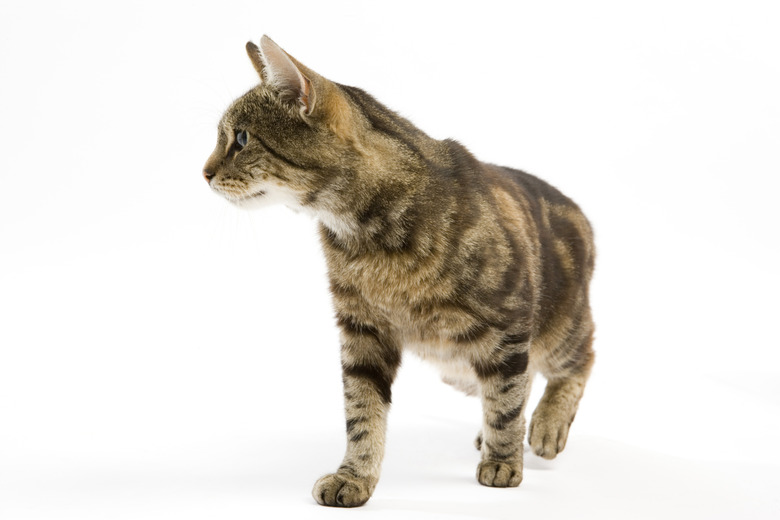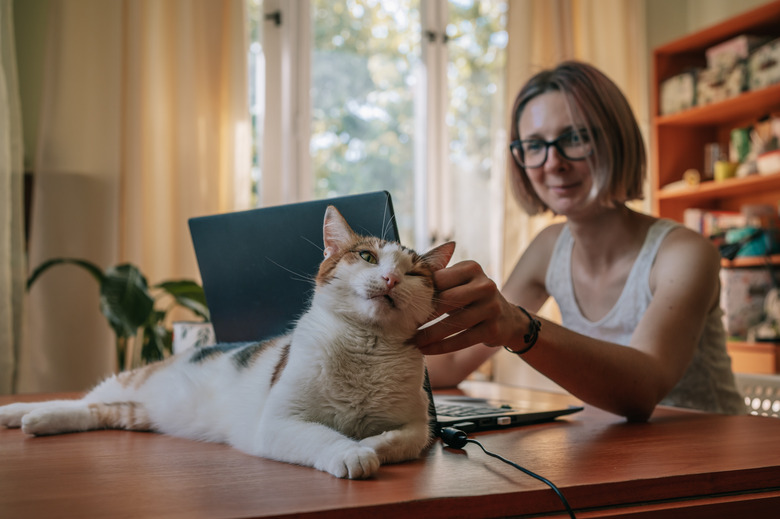Fluid Retention Causing A Cat's Swollen Leg
If your cat appears to have swelling in the legs, face, or abdomen, they may be experiencing fluid retention, also known as edema. This results from the accumulation of fluid between the body's cells caused by leakage from small capillaries. Common causes include renal disease, feline infectious peritonitis, and heart disease. Although not all fluid retention is edema, this type of inflammation can be a symptom of serious illness, so it is essential to seek veterinary care immediately.
Symptoms of fluid retention in cats
Symptoms of fluid retention in cats
Fluid retention in cats can present in different ways. If it is a localized edema, you may notice puffiness or swelling on any part of your cat's body. If the fluid retention is generalized, your cat may appear to have gained weight suddenly and may have a bloated abdomen, and swollen legs.
Your cat may seem lethargic and have difficulty breathing or lying down due to fluid buildup around the organs. Changes in your cat's behavior or your cat's movements are often indications of fluid accumulation.
Showing signs of pain or discomfort when the abdomen is touched is also common, or you may notice that your cat is limping. Other signs to watch out for include vomiting, a reduced appetite, groaning, or other unusual sounds from your cat, such as a rattling while they purr or meow.
Causes of fluid retention in cats
Causes of fluid retention in cats
Fluid retention in cats, especially if localized, can be caused by trauma, insect bites, abscesses, burns, cardiovascular or lymphatic disorders, or blood clots. Leg edema in cats can also result from protein-losing enteropathy or neuropathy.
Cats with more generalized fluid retention may be suffering from severe systemic illnesses, such as congestive heart failure; kidney, liver, or gastrointestinal disease; bacterial infection; internal bleeding; a broken bone; or cancer.
Feline infectious peritonitis, an incurable viral disease caused by a feline coronavirus, is another common cause of fluid retention. As it progresses, it can cause an aggressive inflammatory response around blood vessels that serve the brain, kidneys, or abdomen.
Some medications, such as steroids, can cause fluid to accumulate. Other causes can include hormonal issues and long periods of immobility. Cats with compromised immune systems are more vulnerable to diseases that cause swelling.
Diagnosing fluid retention in cats
Diagnosing fluid retention in cats
If your cat has fluid retention, your veterinarian will conduct a thorough examination to identify the cause. In the case of a localized edema, this may involve a fine-needle aspiration to draw fluid for microscopic evaluation and possibly a biopsy from the affected area. This will help the veterinarian determine if further diagnostic tests are required.
For more generalized fluid retention, complete bloodwork, including a blood count and biochemical profile, will be necessary. Further blood tests for viruses, such as feline infectious peritonitis, feline immunodeficiency virus, and feline leukemia virus, may also be undertaken. Your veterinarian may also check fecal samples for parasites. Urinalysis will assist in the diagnosis of kidney disease, and your veterinarian may also wish to investigate the condition and function of other internal organs.
Because fluid retention can indicate serious and sometimes life-threatening illness in cats, ultrasounds, X-rays, and CT scans may be required as part of the diagnostic procedure. Your veterinarian may request an echocardiogram as well as fecal testing for parasitic infections, and it is possible that your cat will be admitted to the veterinary hospital while tests are conducted.
Treatment, care, and management for cats with fluid retention
Treatment, care, and management for cats with fluid retention
In minor cases where the edema is localized, like insect stings, only minimal treatment, such as applying warm compresses, or anti-inflammatory drugs may be required. Antibiotics or anti-fungal medications may be prescribed for localized swelling, and your veterinarian may wish to drain the site. In more severe cases, amputation of one of your cat's legs may be necessary.
Treatment options for cats with generalized fluid retention caused by underlying disease depend entirely on the cause of your cat's symptoms and diagnosis. If possible, the vet you see will treat the illness causing the fluid retention, but if your cat has end-stage liver, kidney, or heart failure, this may not be possible. In these cases, fluid therapy, drainage, and diuretics may be used to manage the swelling.
Because many cancers are treatable, surgery, chemotherapy, or radiation are all possible treatments if cancer is identified as the cause of water retention in your cat. Other underlying causes may respond to medication specific to the disease, such as cardiac drugs for heart disease.
Cats with fluid retention due to systemic disease will need ongoing follow-up care and monitoring, which are likely to include regular blood tests and urinalysis. Lifestyle changes may be necessary, such as restricted exercise and a specialized diet.
For cats with severe generalized swelling caused by viruses or kidney, liver, or heart disease, the prognosis is likely to be guarded, and your DVM will talk to you about life expectancy and quality of life issues to ensure that your cat is as comfortable as possible.
The bottom line
The bottom line
In cats, fluid retention, also known as edema, has many causes. Many of these are symptoms of serious and life-threatening diseases. Common reasons include trauma, viruses, and organ failure. While minor cases of edema may not require medication or extensive treatment, it is always imperative to get veterinary advice if you notice swelling or fluid retention anywhere on your cat's body.


